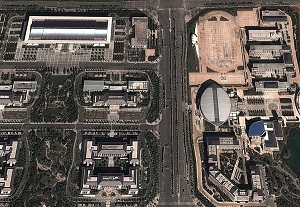

Not to be outdone by US real estate speculators, Chinese developers have taken the bold but dangerous step of building entire cities for populations yet to materialize. These “Ghost Cities” are located in rural areas where development has lagged behind the main port cities and industry centers. The valid observation that continued population growth in the major cities is unsustainable has led to major development groups, many with high govermental connections, to borrow vast sums of money to build these cities as an alternative. This inorganic methodology of build it and they will come overlooks the fact without any existing business infrastructure, population, supply chains or outside investment, the very best outcome is that people will slowly trickle in.
There are desenting voices who point to China’s 14% increase in urbanization trends over the past few years, with a projected increase of another 12% to an adjusted 69% over the next ten years. That would lend some credibility to the methodology of building in anticipation as opposed to around existing populations.
Chinese insiders and economists familiar with the market say that looking at the development efforts through a Western lens is flawed. Author Tom Miller put the problem in a different light, working on the assumption that the demand was a foregone conclusion, “The problem in housing markets today is that it is ‘unbalanced’. This is a favourite term of former Premier Wen Jiabao. It is ‘irrational’ you might say. There are too many ‘high end’ properties, and too few at the ‘low end’. So that is a problem …”
Either way the scopeof the construction is hard to fathom for Western investors who are still reeling from the blow of the last housing bubble. In the end only time will tell whos fiscal approach was the better position.
“China’s Risky Fourth-Tier Ghost Cities is republished with permission of Stratfor.”
photo courtesy of GoogleEarth
